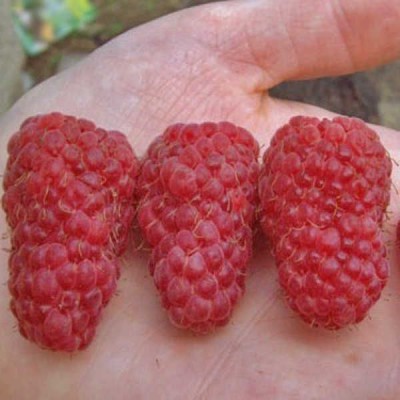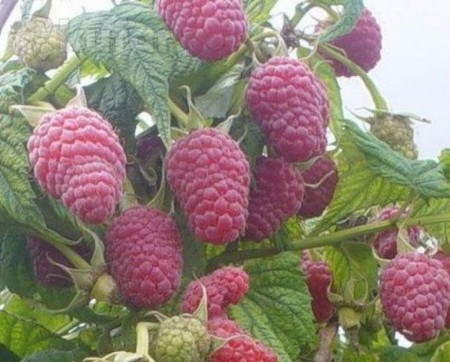Arbat - one of the best varieties of disposable (summer) raspberries. Very productive, with large (from 5 to 12 g) red tasty berries. With good agricultural technology, one bush can produce 4-5 kg of berries.
How to care for Arbat raspberries
Basic care is in spring and autumn. In the spring, overwintered stems must be pruned (by 15-20 cm), then they will produce side shoots - the harvest will be higher. Young, one-year-old stems need to be pinched back to 10-15 cm when they grow to 1 m.
Within a few days, sprouts appear in the axils of the upper leaves and by August-September, instead of a single shoot, 3-5 or more side shoots 30-60 cm long appear on it. In spring they are shortened by 10-15 cm.
The maximum requirement of raspberries for nutrients is at the time of their full fruiting. Most of all it consumes nitrogen and potassium.
It is less demanding of phosphorus, being content with its reserves in the soil. A lack of phosphorus is indicated by thin shoots with reddish, prematurely falling leaves.
If the shoots reach the height characteristic of the variety, are sufficiently thick, are well leafed, ripen in a timely manner and produce a good harvest, then the doses of fertilizers applied correspond to the needs of the plants.
If the soil is not fertile enough, organic and mineral fertilizers should be applied annually, humus (in autumn) - 2-3 kg per square meter. m, spring feeding - 15 g of urea, 30 g of superphosphate per 1-1.5 m.
In the summer, after harvesting, potassium (20 g) and phosphorus (15 g) fertilizers are needed.
Raspberries develop and bear fruit better if their root system is not damaged. Frequent loosening of the top layer of soil disperses it and does not benefit the plants.
Mulching rows of raspberries with humus, compost, peat, chopped straw, sawdust, and leaves helps maintain moisture in the soil and its structure. Mulching is especially necessary in the first two years of the plantation’s life.
Mulching is carried out after the first spring tillage of the soil with a layer of 6-8 cm (with straw - 10-15 cm). In subsequent years, the layer thickness is reduced by 1.5 times. In the third year, the straw is embedded in the soil in the fall, and replaced with new straw in the early spring. At the same time, additional nitrogen fertilizers are applied to make up for losses due to straw decomposition.
The raspberry harvest depends on the timely and sufficient supply of water. During periods of prolonged drought, watering is carried out once a week. After drying, the soil is mulched.
It is better to water in grooves 12-15 cm deep, dug along the raspberry strips at a distance of 40-50 cm from the plants.





 CUCUMBERS NEVER GET SICK, I'VE BEEN USING ONLY THIS FOR 40 YEARS! I SHARE A SECRET WITH YOU, CUCUMBERS ARE LIKE THE PICTURE!
CUCUMBERS NEVER GET SICK, I'VE BEEN USING ONLY THIS FOR 40 YEARS! I SHARE A SECRET WITH YOU, CUCUMBERS ARE LIKE THE PICTURE! You can dig a bucket of potatoes from each bush. Do you think these are fairy tales? Watch the video
You can dig a bucket of potatoes from each bush. Do you think these are fairy tales? Watch the video
 How our fellow gardeners work in Korea. There is a lot to learn and just fun to watch.
How our fellow gardeners work in Korea. There is a lot to learn and just fun to watch. Eye trainer. The author claims that with daily viewing, vision is restored. They don't charge money for views.
Eye trainer. The author claims that with daily viewing, vision is restored. They don't charge money for views. A 3-ingredient cake recipe in 30 minutes is better than Napoleon. Simple and very tasty.
A 3-ingredient cake recipe in 30 minutes is better than Napoleon. Simple and very tasty. Therapeutic exercises for cervical osteochondrosis. A complete set of exercises.
Therapeutic exercises for cervical osteochondrosis. A complete set of exercises. Which indoor plants match your zodiac sign?
Which indoor plants match your zodiac sign? What about them? Excursion to German dachas.
What about them? Excursion to German dachas.